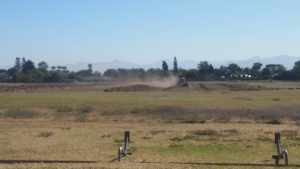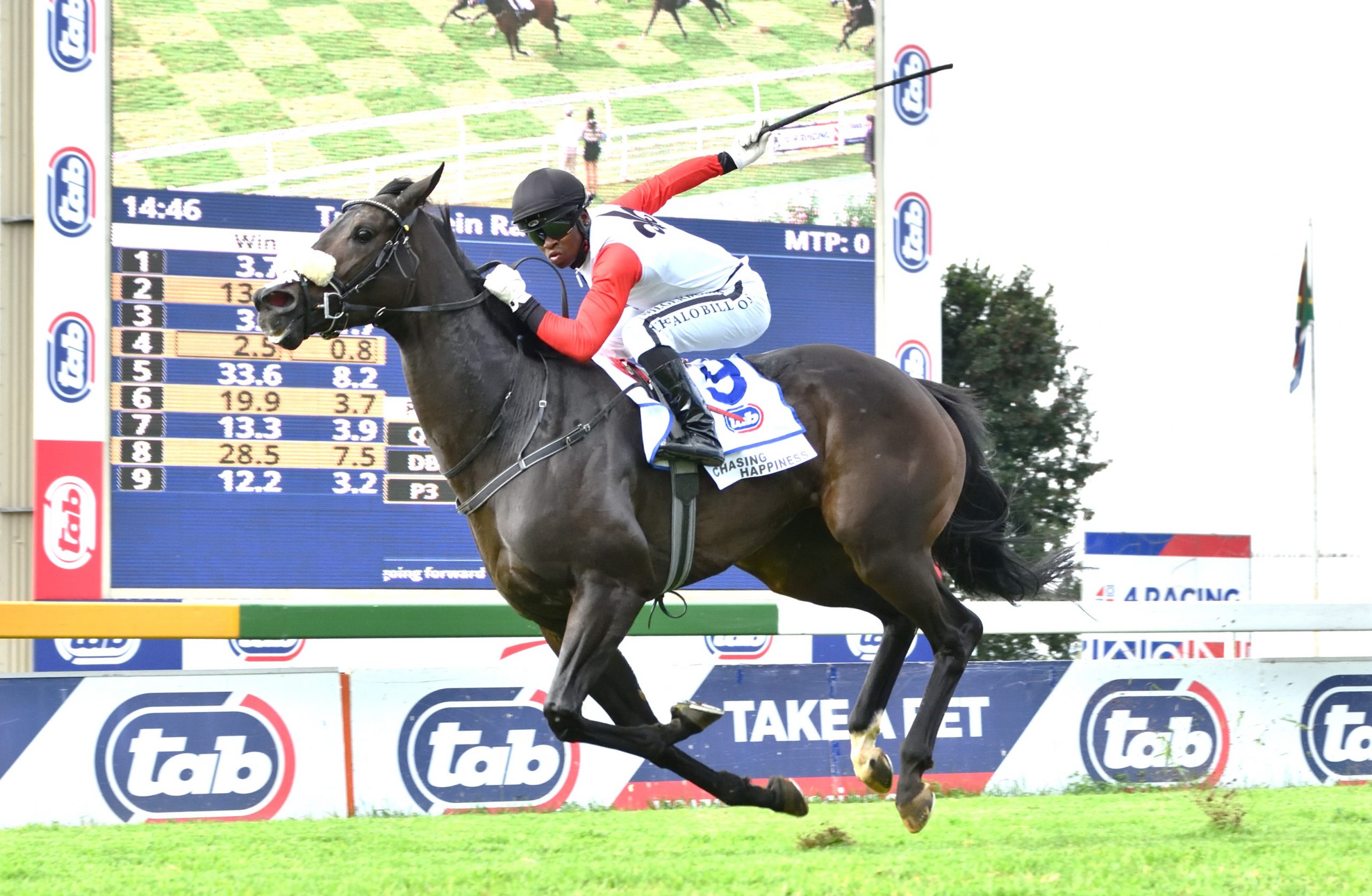With refurbishment work having commenced at Durbanville racecourse, we popped round to check on the progress and chat to course manager extraordinaire Dean Diedericks on the plans.
When we met on a sunny Durbanville afternoon, most of the straight had been carefully lifted and relocated to a nursery area that has been established in the centre of the track. Civils 2000 were granted the tender for the job and there was assorted earth moving equipment scattered around the track and groups of people studying, measuring, staring off into the distance and fastidiously making notes.
Dean and Durbanville course manager Caven Swift showed me around. Work was originally scheduled to commence on 1 November, but after being delayed by two weeks, they finally broke ground on Monday, 14th.
The scope of the project includes lifting the entire track, increasing the cross fall of the far bend, effecting a change to the bend into the straight to adjust the angle of the home straight to the finish as well as to extend the pull up area.
As the sections of grass are being lifted, they are carefully being moved to two specially prepared nurseries on the infield (which will save on having to purchase grass).
Why?
Dean explains that the main reason for undertaking the project is to address the number of cross falls (which most people incorrectly refer to as cambers) and corrugations that have developed around the track as a result of cumulative years of top dressing. It is interesting to learn that Durbanville requires an average of 30 cubic metres of divot fill per racing season – 20 of which is sand and 10 being compost. To put that into context, Durbanville hosted 11 meetings from September and October, while Kenilworth – which is a much bigger track – has 21 meetings scheduled between October and Christmas.
While it is the nature of things that areas of land naturally subside over time, this issue has been exacerbated at Durbanville where the substrate varies around the track, compounded by the fact that previous track managers have used a variety of dressing materials over the years, causing some areas of the track to subside more dramatically than others.
Other challenges include the fact that there are no plans mapping out all important services such as cables and water pipes, so there are bound to be a fair number of surprises along the way, “but that’s the beauty of the project,” Dean shrugs good-naturedly.
What is being done
“We have taken feedback from trainers and jockeys on their requirements and added that to our ideas,” Dean explains. “ We have redesigned the bend; to accommodate this the main straight has been moved out. As a result the winning post will move fractionally back thus also allowing for a longer pull up, but not too far as to compromise the commentator and camera angles.” In practical terms, the back straight will meet the turn at a lesser angle and the exit into the home straight will be more gentle, hopefully relieving some of the draw and track bias.
Although jockeys and trainers frequently refer to the undulations and corrugations of the Durbanville track, it was difficult to fully appreciate with the turf in place. However, with the turf lifted, the differences in the levels are a lot more apparent. They will be digging down to a depth of approximately 400mm and will then level and even out the surface, installing a cross fall of approximately 4% on the turn. Asked how this is done, Dean explains that earth moving machinery has become so advanced that desired levels can be set electronically and equipment operated according to specifications.
They are installing a conventional drainage system to help during the winter months, and to keep the grass going during the summer months, have opted for a manual “built in” (fixed) irrigation system. Asked why manual rather than automatic, Dean explains that it is for the practical reasons that automated systems are expensive to maintain and, with the crime rate in South Africa being what it is, components regularly go missing, which compromises watering programmes.
Once the turf has been re-laid and the drainage installed, they will undertake a light scarification and top dressing. Dean explains that they make use of Kikuyu grass as it is tough and hardy and withstands the rigours of racing fairly well and also recovers fairly quickly. One of the lesser known challenges of track management is keeping weeds at bay and Dean explains that keeping invaders off the Durbanville track is made slightly easier by the fact that they are allowed to mow a border next to the track, which makes it harder for the wild vegetation on the infield to encroach. This is not a luxury they have at Kenilworth, where the conservancy forbids any cutting back of the natural vegetation and makes keeping the grass ‘clean’ much more difficult.
How long will it take?
The project is estimated to take approximately 5 months. The contractors will be working through Christmas to get the job done and it is hoped that the contractors will be offsite by March, after which the grass will need a little time to knit before it is ready for use again.
One of the major logistical challenges presented by Durbanville being out of action, is the increased pressure on the Kenilworth tracks. Grass gallops still need to be held and of course we are just getting into the swing of the Cape feature race season. Adding to the level of difficulty is the current low rainfall and imposed water restrictions, making the maintenance of Kenilworth even more difficult.
However, Dean and the team are convinced the hard work will all pay off in the long term. “We only have two tracks in Cape Town and we need them both – not just in terms of offering a variety of racing, but also simply to allow the tracks time to recover. So we have to address and improve Durbanville in order to take the pressure off Kenilworth. We can’t hope to please everyone, but we are doing our best. We would like to improve people’s perception of Durbanville as a ‘lesser’ track and hopefully this project will help rejuvenate the course.”












